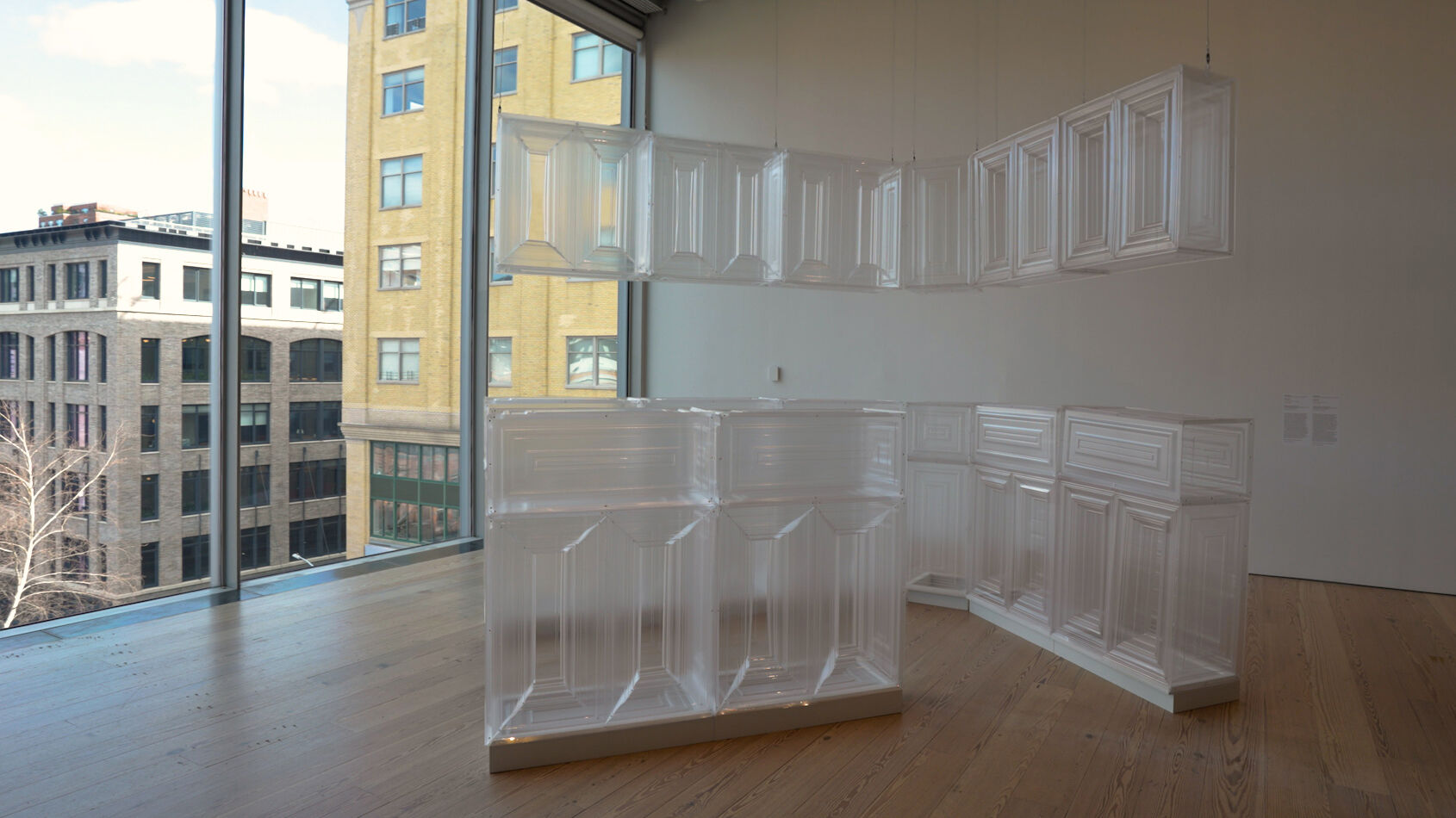Emily Barker
“. . . I’m a critical person, [but it’s] based out of love, because I want things to get better.”
— Emily Barker
Emily Barker was born in 1992 in San Diego, California, and grew up in Georgia where they studied painting at the School of the Art Institute of Chicago. They are an artist and model living in Los Angeles, California. Barker has Complex Regional Pain Syndrome (CRPS) and uses a wheelchair.
Kitchen (2019) showcases for non-disabled people what it’s like to move through spaces that are not built with inclusivity in mind. In this installation, Barker simulates a kitchen that is built to scale so standing viewers can experience the space as the artist does in a wheelchair. For Kitchen, Barker uses a transparent plastic material based “not on novelty but on constraint.” As they explain, “the material is very light-weight; I can work with it from my chair. If it were any heavier, I wouldn’t be able to cut the vacuformed pieces out, let alone rivet them together and install them. It’s very important to me to have that creative control and agency. The result is metaphoric, atmospheric, but also practical.” Describing Kitchen, Barker reflects, “I was examining a blind spot (so-called) in our culture: the standardized design and building codes we’re born into, which exclude people who deviate from societal norms.”
Activities
Artist as Observer
How can you make living spaces accessible?
Emily Barker states, “honestly, it’s really hard to find brands or organizations that are willing to listen—and then take into consideration—your access needs.” Encourage students to think about their living space. Ask them to choose and draw a part of where they live. Invite students to consider ways that this space can be made more accessible for everyone. Have them make a second drawing that reflects these changes. Ask students to share and explain their results.
Artist as Storyteller
How do you change a narrative?
Regarding companies and organizations’ lax preconceptions about accessibility and inclusion, the artist reflects, “They represent either a sinister neglect or direct punishment.” Tell the students they are writers for a newspaper or magazine. Ask them to select an existing issue or problem and imagine a creative solution through a new invention or legislative action. Have them write an article announcing this exciting innovation and why it’s important. Have students share their articles and then reflect on ways they could possibly really bring these results to fruition. Encourage them to act on their convictions.
Artist as Experimenter
How do you transform a place or object to make a statement?
“I want to show how the seemingly mundane built environment and the mass production of objects harm people every day,” reflects Emily Barker. Encourage students to think about and discuss places or objects they use and or see daily. Have them think about how these places and objects might not be completely inclusive: for example, a poster with text that is a color, size, and/or font that might not be easily legible for people who are blind or have low vision. Encourage students to examine how they can modify and transform the place or object to make others aware of their design flaws. Have them propose and or make these changes happen.
Artist as Critic
How do you creatively produce awareness of an issue?
Emily Barker explains, “I work with invisible ideas, concepts, and scales.” Ask students to think about a concern, issue, or cause that is important to them. Have them discuss why it matters to them and what they want to say about the topic. Encourage them to reflect on how they could creatively make others aware of their concerns. Have students write proposals or draw diagrams for their projects and/or construct them. Display the designs or works in a place at the school that is accessible to others to raise awareness.
Additional Resources
Murmurs Gallery: Information about Emily Barker, Built to Scale, 2019.
Gossamer: Interview with Emily Barker.

